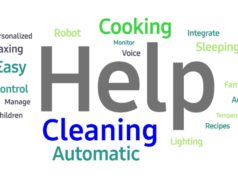
It’s no secret that devices are becoming ever more intelligent. New business models, technologies, trends, and developments including big data, the internet of things, and cloud computing mean data security requirements have changed. Twenty years ago, firewalls were the ultimate in security.
Now though, they are an ever smaller component of security strategies. For example, the moment a company considers deploying a cloud solution they must also think about secure integration and operation, and of course the security of the software solution itself. After all, nobody wants to lose control over important business data.
Before, everything was stored on a mainframe in a locked room. But with increasing interconnection of companies and business models, more and more IT and manufacturing systems are wired up to the internet, making them easy targets for hackers. The more companies invest in cloud applications, the greater the need for solutions that protect these fundamentally new infrastructures.
An interesting question, for example, is where should a company’s data be stored? This is an important issue, especially in an era of smart manufacturing. It is part of the reason why mid-size companies hesitated for a long time before deploying cloud solutions. Today it makes even more sense to bring in a strategic technology partner as cloud vendors often have higher security standards than most companies have for storing their own data.
Without the cloud, many business models would be unattainable for companies, such as digital farming and intelligent transportation systems, and of course, smart manufacturing. Every new use of technology inevitably raises new security issues.
Platforms Bring Flexibility and Security
One way of going digital without compromising on security is the platform-as-a-service model which creates a safe environment for customers to develop and operate cloud solutions from vendors or even their own solutions. Some of the security measures that can be accessed by developers through APIs include performance encryption, administration of users and authorizations, verification of users through secure standard industry tokens SAML and OAuth, as well as administration of private and public keys. This ensures that the customer alone has access to company data and no unauthorized third party can intrude.
Security Is a Never-Ending Story
Because of the constantly changing nature of the security threats in a digitally networked world, passive security measures no longer suffice. No-one can or should assume that their security measures cover 100% of the threats — neither now nor in the future. Therefore, it is important to identify the gaps in your front line defense as soon as possible and close them. Early detection is key. Yet another aspect that is gaining importance is developing tools that efficiently eliminate threats before they occur. The most effective way of mitigating risk is of course identifying and detecting cyber-attacks in their initial stages and then reacting appropriately.
Thankfully, new technology solutions are getting even better at closing the gaps left by traditional antivirus software and they will only improve as defense strategies become increasingly sophisticated. For example, encryption technologies, which only allow authorized users access to certain data, are now also being used to secure communication between machines.
While widespread digitalization will certainly create risks, it will also create opportunities that should be seized and not shied away from. With the support of forward-thinking security strategy and technology solutions to match, the modern business can minimize potential risk and step confidently into a digital future.
© 2016 Guardian Web under contract with NewsEdge. -.







